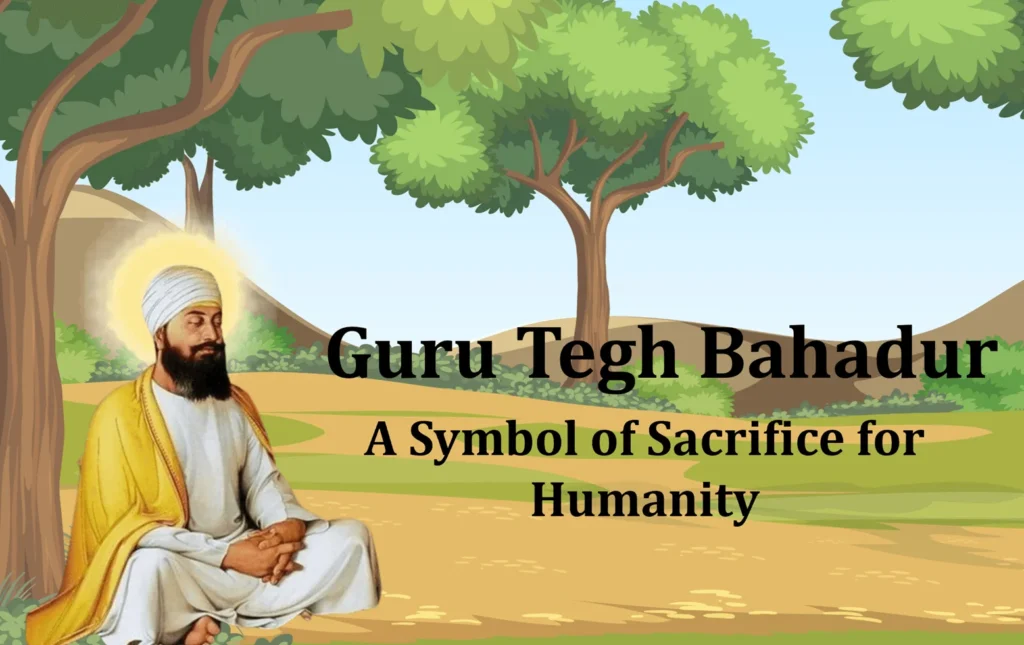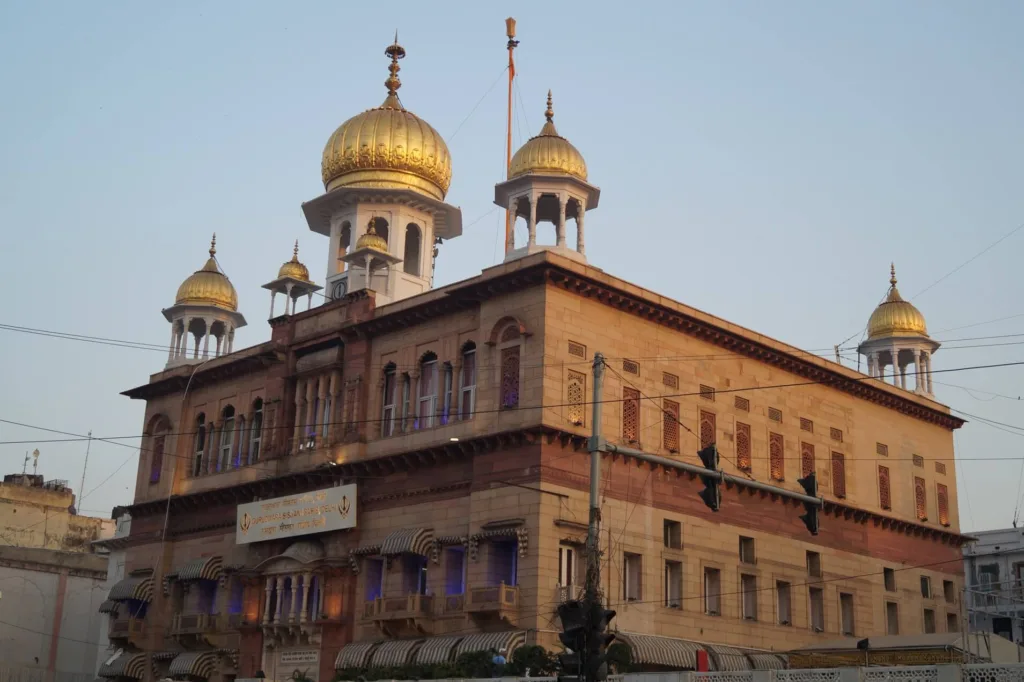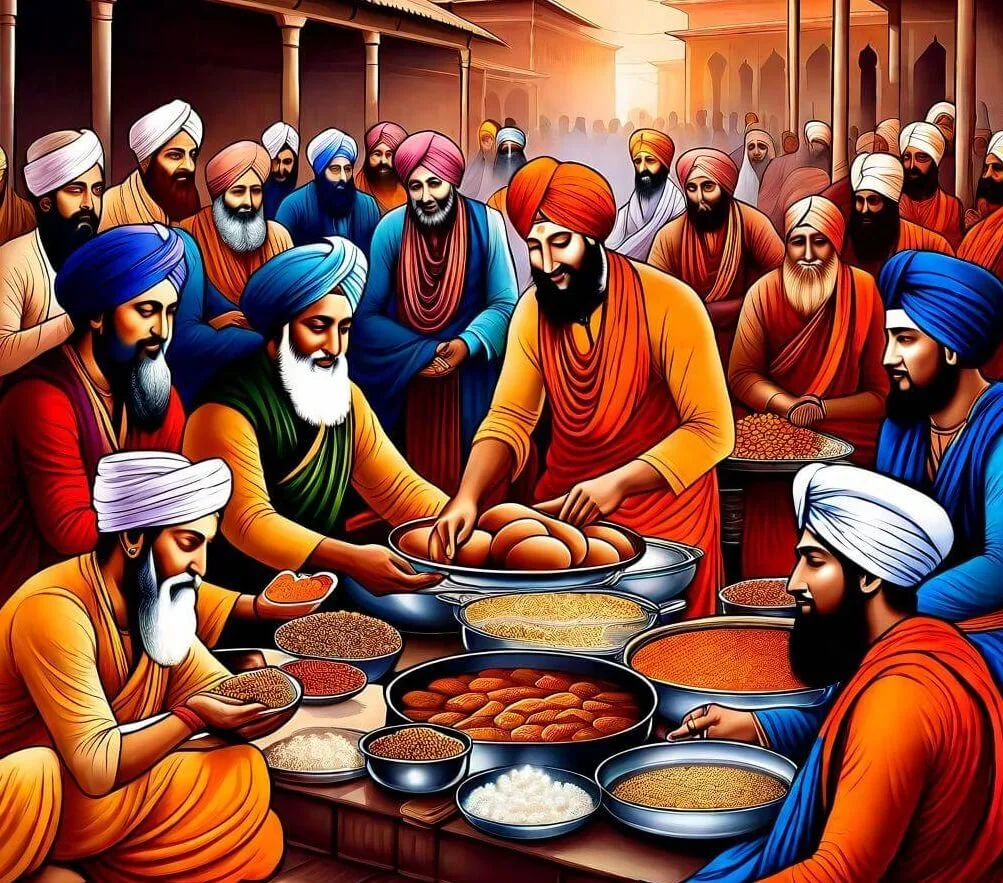
Guru Tegh Bahadur, the ninth Sikh Guru, holds a significant place in Sikh history. Every year Sikhs honor Guru’s martyrdom, on his Shahidi Diwas. This day serves as a reminder of his sacrifice, for freedom and promoting harmony among different faiths. Let’s explore the context surrounding Guru Tegh Bahadur, the importance of his martyrdom the events that led to his sacrifice and the lasting impact he had.
Historical Background of Guru Tegh Bahadur
Early Life and Spiritual Journey
Guru Tegh Bahadur came into this world on April 1, 1621, in Amritsar, Punjab. Right, from the start he showed a connection, with spirituality and empathy. His father, Guru Hargobind served as his guide. Imparted the teachings of Guru Nanak, the founder of Sikhism. Throughout his life he embarked on journeys during which he gained wisdom and knowledge from enlightened individuals enriching his journey even further.
Ascension to the Guruship and Key Teachings
In the year 1664, Guru Tegh Bahadur took on the role of the Sikh Guru. He placed importance on the practice of meditation and selfless service, within Sikhism. Through his teachings he motivated Sikhs to lead lives guided by righteousness and honesty. Some of the hymns known as Shabads can be found in the Guru Granth Sahib, which is regarded as the scripture of Sikhism.
The Sikh community encountered difficulties during the Mughal era due to their beliefs. Emperor Aurangzeb, who was notorious for his policies towards non-Muslims posed a threat, to Sikhs at that time. His leadership was tested as he navigated through a time of religious intolerance and adversity.
Significance of Guru Tegh Bahadur Shahidi Diwas
Historical Context: The Tyranny of Emperor Aurangzeb
To truly comprehend the importance of his martyrdom it is essential to grasp the backdrop. During Emperor Aurangzeb’s reign there was a period characterized by oppression, against non-Muslims, particularly Hindus and Sikhs. These individuals endured forced conversions and relentless religious persecution. In this backdrop, his sacrifice takes on a profound meaning.
Sacrifice for Religious Freedom and Interfaith Harmony
The martyrdom of Guru Tegh Bahadur demonstrated his dedication to upholding freedom. When the Kashmiri Pandits approached him for assistance, in resisting conversions He fearlessly defended their rights, aware of the potential consequences that would arise from challenging Aurangzeb’s authority. His sacrifice upheld the principles of interfaith harmony and inspired generations to come.
Inspiring Lessons in Courage and Selflessness
The enduring impact of Guru Tegh Bahadurs martyrdom serves as a source of inspiration. His unwavering strength, in the midst of challenges and his altruistic act serve as a reminder of the core principles upheld by Sikhism. The resolute dedication shown by him in safeguarding the rights of others stands as an exemplar of bravery and selflessness that retains its relevance in times.
Martyrdom of Guru Tegh Bahadur
Events Leading to the Martyrdom
Protection of Kashmiri Hindus and Defense of Religious Freedom
Emperor Aurangzeb, feeling concerned, about Guru Tegh Bahadurs impact, on the people called upon him to come to Delhi with the hope of persuading him to embrace Islam. The Guru, aware of the consequences saw this as a chance to stand up for the rights of the Kashmiri Hindus who were experiencing religious oppression.
Summoning by Aurangzeb and His Demands
When Guru Tegh Bahadur reached Delhi he faced Emperor Aurangzeb, who insisted on his conversion, to Islam. However, the Guru stood firm in his faith. Became a symbol of defiance, against religious oppression.
Guru Tegh Bahadur’s Resistance and Ultimate Sacrifice
When the Guru refused, three of his associates who had been detained with him were subjected to extreme torture leading to their death. Bhai Sati Das was burned alive while Bhai Dayal Das was thrown into a boiling water. Moreover, Bhai Mati Das was chopped into pieces.
Despite enduring torture and immense pressure he remained steadfast in his dedication to Sikhism and the values he cherished. The Guru’s unwavering stance, against Aurangzeb’s demands eventually resulted in his martyrdom. Tegh Bahadur was then publicly executed on November 24th,1675 in Chandni Chowk, a marketplace near the Red Fort. Presently there stands a Gurudwara named “Sis Ganj Sahib” in his remembrance.

Legacy of Guru Tegh Bahadur’s Martyrdom
Preservation of Sikh Values and Identity
Guru Tegh Bahadur’s martyrdom solidified the resolve of the Sikh community to preserve their values and identity. His sacrifice became a defining moment in Sikh history, reinforcing the ideals of religious freedom and tolerance that Sikhism stands for.
Impact on Interfaith Relations and Freedom of Worship
The martyrdom of Guru had implications that went beyond the Sikh community. It acted as a driving force, for conversations between faiths. Played a role, in safeguarding the right to practice religion not only in India but globally.
Endurance of the Sikh Community in the Face of Adversity
The sacrifice of the ninth Guru of Sikhs remains a source of inspiration for Sikhs today serving as a reminder of the fortitude and perseverance needed to uphold their faith in times. Through his martyrdom he instilled resilience, within the Sikh community giving them the strength and determination to overcome obstacles, with dignity and resolve.
Celebrations and Practices on Guru Tegh Bahadur Shahidi Diwas
Observances at Gurudwaras and Sikh Community Events
Religious Ceremonies and Prayers
On Guru Tegh Bahadur Shahidi Diwas, Gurudwaras worldwide hold religious ceremonies and prayers to honor the martyrdom of Guru Tegh Bahadur. Devotees gather to offer their respects and seek spiritual solace.
Kirtan and Katha Sessions: Singing and Recitation of Scriptures
Kirtan and Katha sessions form an integral part of the celebrations. Devotees come together to sing hymns and recite the teachings of Guru Tegh Bahadur, immersing themselves in a spiritual and meditative experience.
Langar Seva: Communal Meals and Social Service
A unique aspect of Sikhism is the tradition of Langar, where communal meals are prepared and shared without discrimination. On Guru Tegh Bahadur Shahidi Diwas, Langar Seva becomes an important practice, emphasizing the principles of equality and selfless service.

Educational and Inspirational Initiatives
Discourses on Guru Tegh Bahadur’s Teachings and Martyrdom
Scholars, spiritual leaders, and Sikh organizations organize discourses and lectures to shed light on the teachings and martyrdom of Guru Tegh Bahadur. These sessions aim to provide a deeper understanding of his spiritual journey and the lessons he imparted.
Cultural Performances Depicting His Life and Sacrifice
Cultural performances, encompassing music, dance and theater serve as a means to portray the life and sacrifices of Guru Tegh Bahadur. These artistic expressions establish a connection, between individuals and the core principles he preached encouraging them to adopt his values.
Educational Programs Promoting Religious Tolerance and Harmony
Continuing the legacy of Guru Tegh Bahadur, educational programs are organized to encourage tolerance and unity. These initiatives aim to raise awareness, about Sikhism facilitate conversations, between faiths and support the freedom to practice one’s religion.
Conclusion and FAQs
As we remember Guru Tegh Bahadur on Shahidi Diwas, let’s draw inspiration from his selflessness and commitment to religious freedom. His martyrdom continues to be a beacon of courage and resilience for people across all faiths, reminding us to uphold the principles of tolerance, harmony, and justice.
Frequently Asked Questions (FAQs)
What was the role of Guru Tegh Bahadur, in shaping Sikhism?
Guru Tegh Bahadur played a part in shaping Sikhism by highlighting the significance of liberty, unity among different faiths and selfless service. His sacrifice became pivotal in cementing Sikh identity and principles.
How did the sacrifice of Guru Tegh Bahadur impact the Mughal Empire?
The impact of Guru Tegh Bahadurs sacrifice, on the Mughal Empire can be seen as an event, in its history that revealed the repercussions of intolerance. It sparked a spirit of resistance, among people ultimately contributing to the decline of the Mughal Empire.
What lessons can we derive from Guru Tegh Bahadurs sacrifice?
The selfless sacrifice made by Guru Tegh Bahadur imparts lessons to us all. It emphasizes the importance of standing firm, in our beliefs advocating for other’s rights and fostering tolerance. His martyrdom serves as an inspiration for us to cultivate courage, resilience and compassion when faced with circumstances.
How is Guru Tegh Bahadurs memory cherished and commemorated in times?
Guru Tegh Bahadur is remembered and honored through various religious ceremonies, cultural performances, and educational initiatives. His teachings continue to be cherished in Sikh communities worldwide, ensuring that his legacy remains alive.
Are there any significant historical sites associated with Guru Tegh Bahadur?
The Gurdwara Sis Ganj Sahib in Delhi marks the location where Guru Tegh Bahadur was martyred. It stands as a significant historical site, reminding people of his sacrifice and the principles he stood for.
